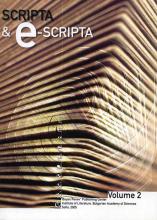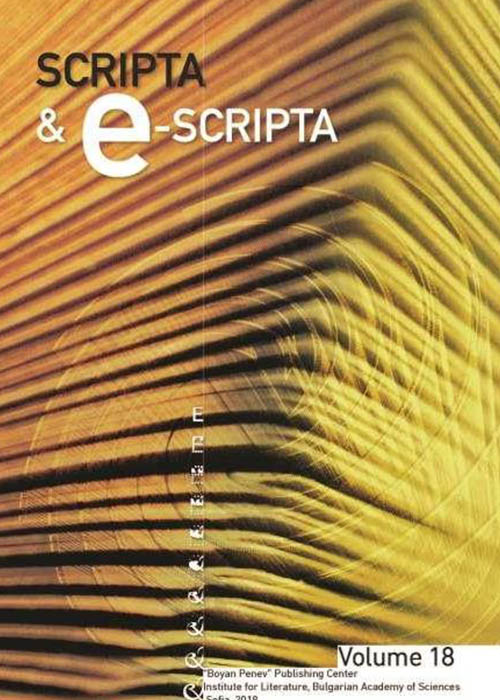Editing Manuscript Fragments

- Author(s): Ralf Cleminson
- Subject(s): Language studies // Manuscript fragments // Medieval Slavonic // Electronic publications //
-
Published by: Institute for Literature BAS

- Print ISSN: 1312-238X
- Summary/Abstract:
The article presents a first attempt of a publication of fragments from medieval Slavonic written records in electronic form – a problem which so far has not found a satisfactory solution. Two manuscripts from the National Library on Budapest (Szechenyi) have been studies, described and realized as electronic publications. The first one (MS Duod. Eccl. Slav. 2) is Glagolhic, from XI-XII century and contains Vita of Simeon Stulpnik. The second one (Fragm. Eccl. Slav. 3) includes seven parchment fragments from XIII-XIV century with partially conserved Cyrillic text by the Apostle. The possibilities to deliver the data and metadata from the fragments are examined. As a result the most precise and close to the original electronic publication can be realized. Subject of discussion are the rules created in the framework of the Text Encoding Initiative, which although oriented to a wide range of different kinds of texts, do not reflect the specificity of the medieval manuscripts. Regarding the fragments, of paramount importance is the necessity in the model of description the degree of preservation of the text, depending on the preservation of the material on which it has been conserved, to be noted. As the fragment does not contain the whole text of the primarily existing manuscript but only part of it, the hierarchy of the computer description should reflect this peculiarity, as at the same time it well presents the separate lines in the text, about the separation of words, about the preserved (or missing) letter symbols and the punctuation. Meanwhile a place for marking the identification of the biblical text should be provided. Discussed in detail are the possible approaches to the elements, their characteristics and order in the publication – from the highest to the lowest level at the description of the text and its articles. Some questions connected with Unicode have been presented, in the context of the author’s view that not only the encoding of the texts is important, but also the adequate representation of their position in the writing margin, for example, referring to the rubrics and their writing in the margins. Enclosed is an illustration of the acquired approach – publication of fragment No. 1 (its front side, Romans 1:8-14).
Journal: Scripta & e-Scripta vol 2, 2004
-
Page Range: 11-29
No. of Pages: 19
Language: English - LINK CEEOL: https://www.ceeol.com/search/article-detail?id=191678
-
Ralf CleminsonFaculty Associate, Prof., PhD University of Oxford, United Kingdom
-
SUBJECT: Language studies // Manuscript fragments // Medieval Slavonic // Electronic publications //KEYWORDS:
-